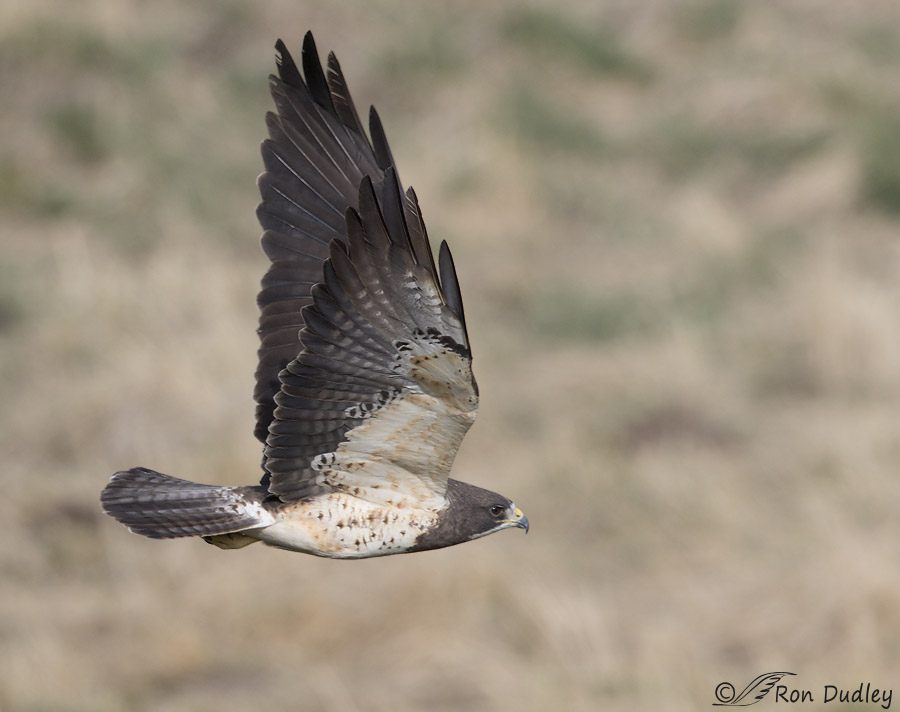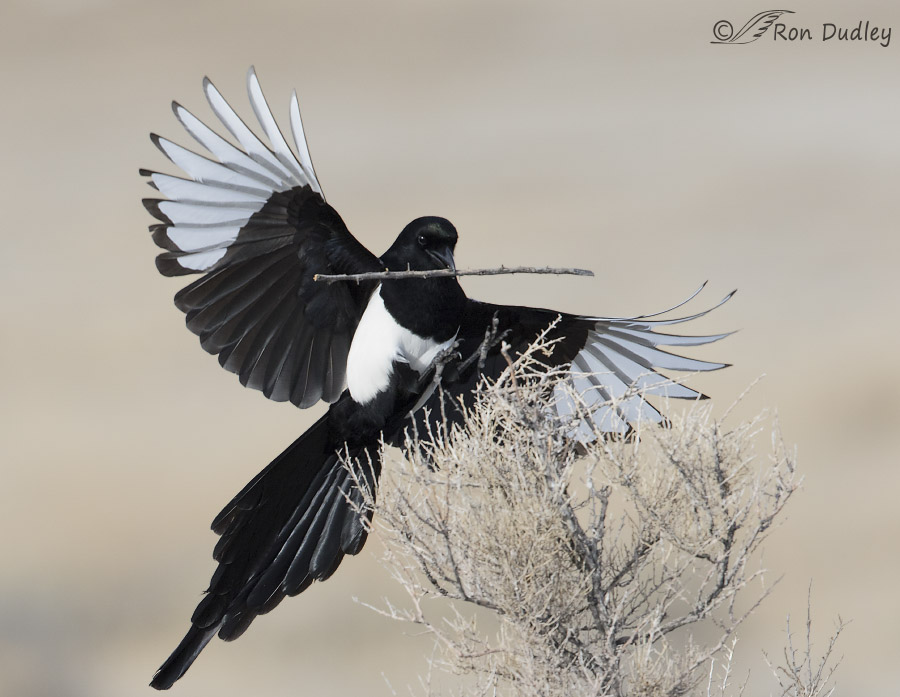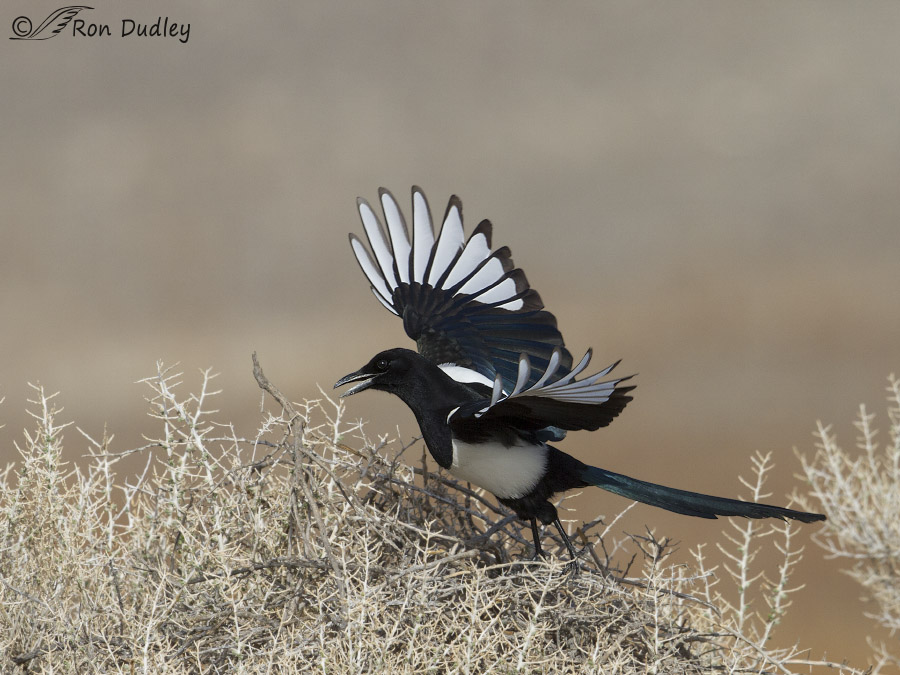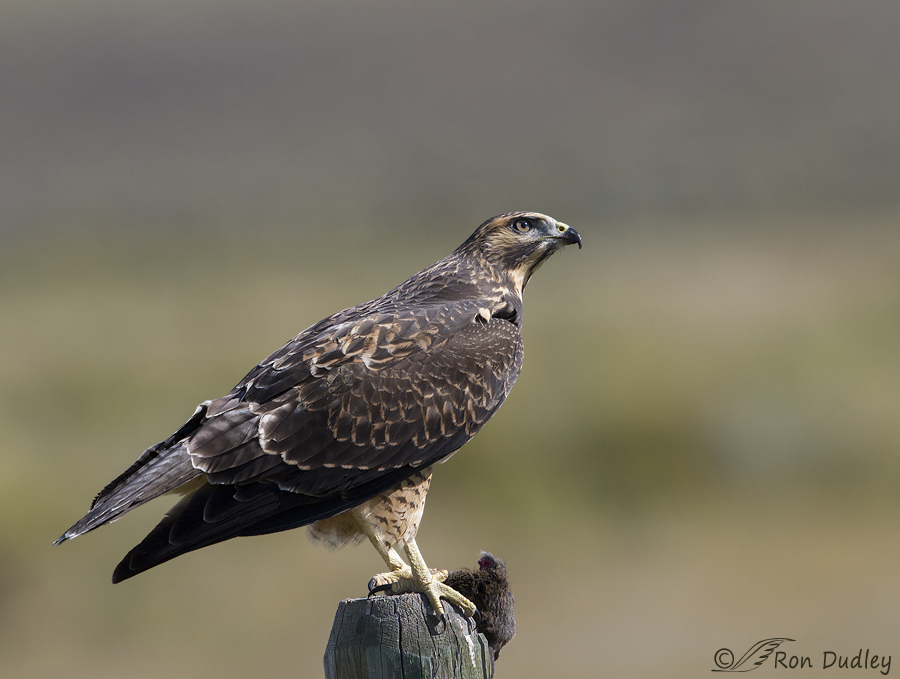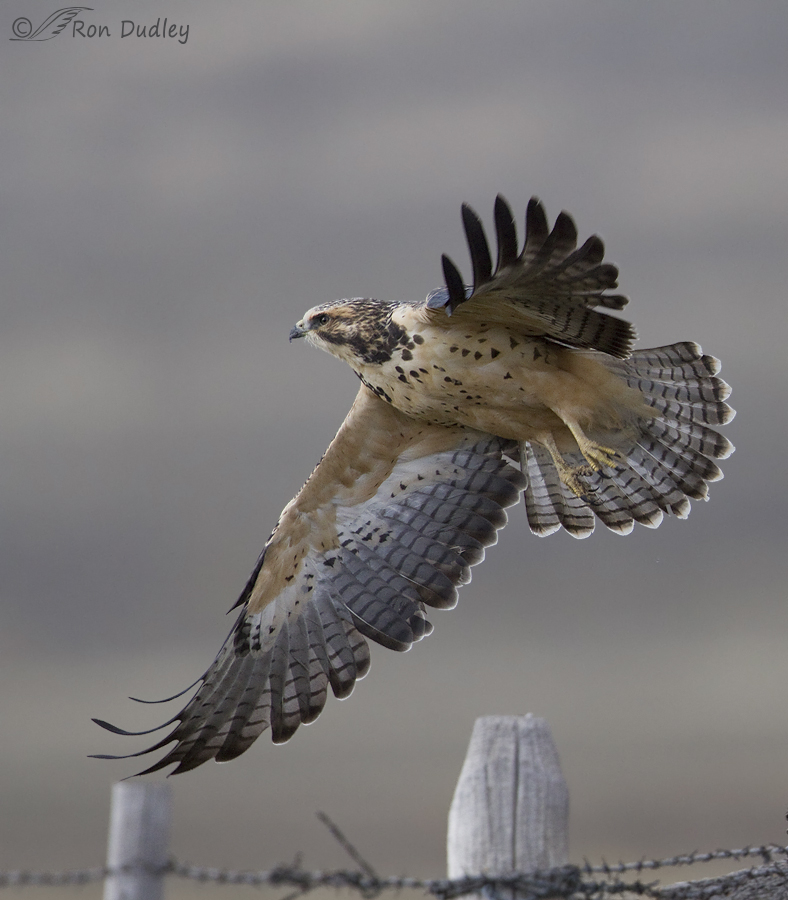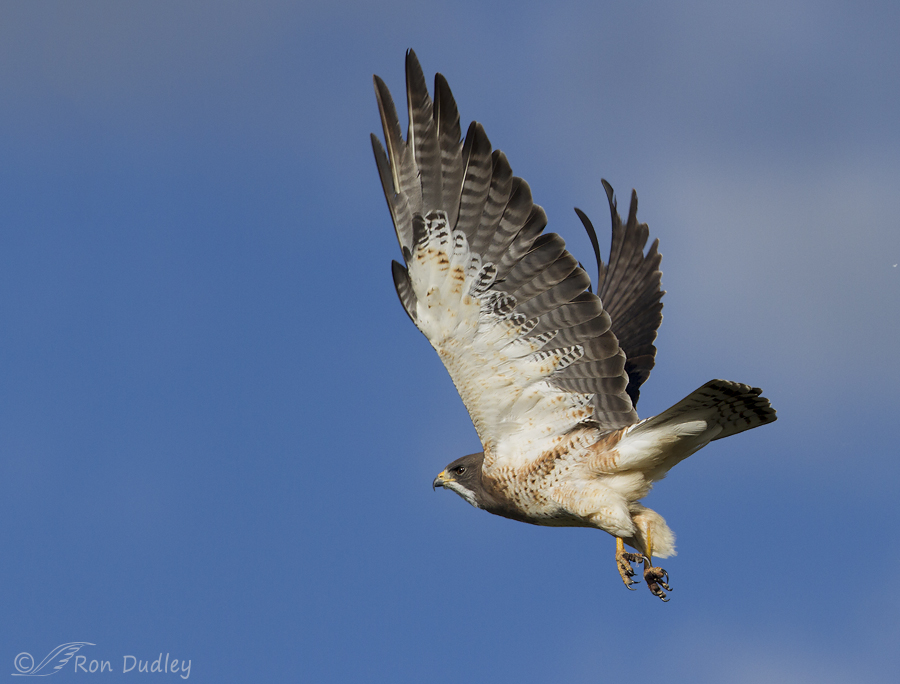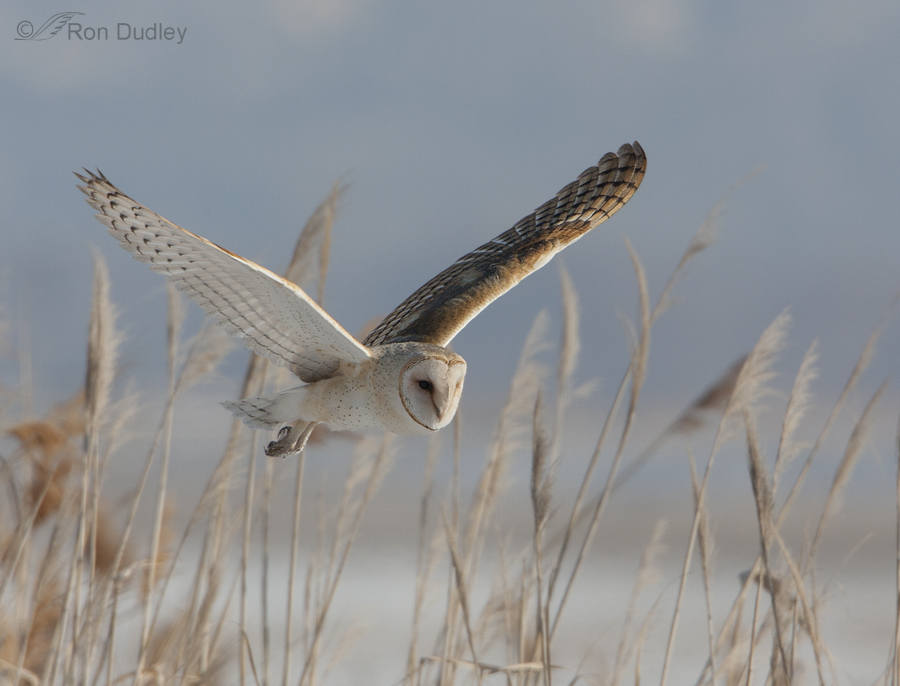Tag: catch light
Magpies – They’re Already Building Nests
Magpie Take-off From Nest Sequence
Forster’s Tern In Flight
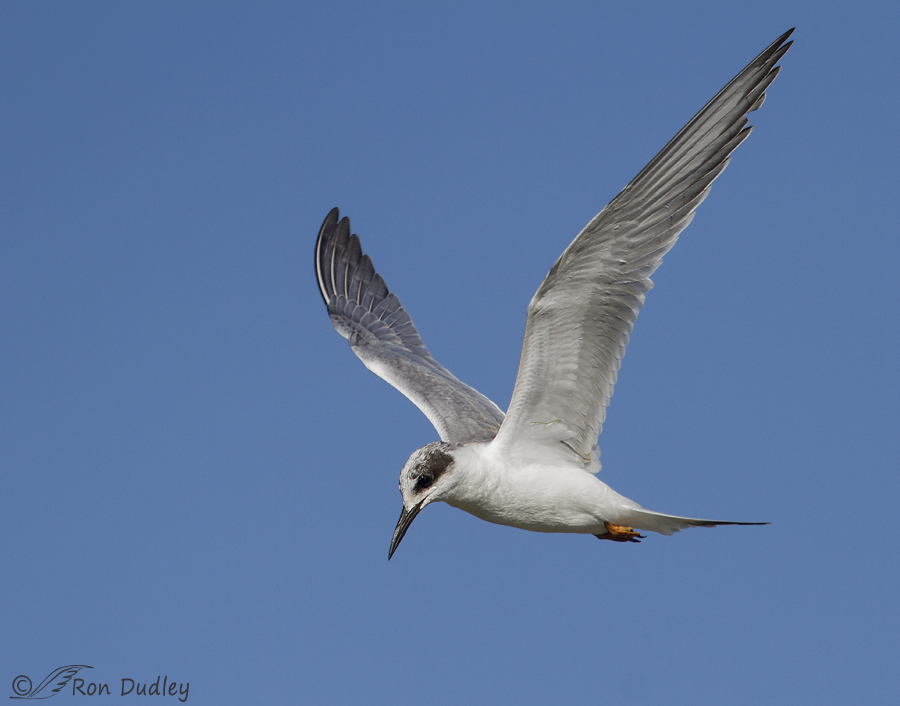
The Forster’s Tern is the only tern that is almost entirely restricted to North America year around. They’re sometimes called “marsh terns” because they breed primarily in fresh, brackish and saltwater marshes, including here in northern Utah. Prior to the Migratory Bird Treaty Act Forster’s Terns were hunted for the millenary trade and because of their habit of hovering over other individuals that had been killed they were particularly vulnerable to being shot.
Yet Another Reason For Photographing Raptors When The Sun Is Low
Swainson’s Hawk In Flight In Low Light
Swainson’s Hawk Underwing Plumage Patterns
Barn Owl Hunting With A Storm Approaching
Red And Blue On Red And Blue – American Kestrel
This image was taken several years ago in early October at Farmington Bay. I’ve always liked the color combinations in the shot. The background is the deeply shaded Wasatch Mountains. The reds are caused by the fall colors of scrub oak and other vegetation. 1/125, f/8, ISO 400, 500 f/4, 1.4 tc, natural light, not baited, set up or called in It was overcast, with clearing to the west (behind me) so it was bright back there. This kind of lighting often produces a horizontal catch light in the eye, rather than the more typical pinpoint catch light. I often like that effect, as I do here. I’ve seen noticeably fewer kestrels this winter and early spring than I have for many years. I sure hope there’s nothing ominous going on… Ron
Barn Owls On Unnatural Perches
It’s been a while since I’ve seen any Barn Owls out and about and I’m thinking they won’t be flying again during daytime until at least next winter so I decided to bid them adieu for the present with one last post for the season. I generally prefer my avian subjects on natural perches but Ingrid Tayler’s affection for birds on man-made perches in the urban landscape is beginning to instill in me a little more flexibility. Perhaps it isn’t too late for some new tricks from this old dog… 1/2000, f/7.1, ISO 500, 500 f/4, natural light, not baited set up or called in At Farmington Bay WMA there are numerous signs posted directing hunters to where they can hunt and where they cannot and those signs are favorite resting spots for hunting raptors. When I come across an owl on one of these signs I’ll typically drive on by unless there’s a possibility for take-off shots but I made an exception for this one despite the less than ideal light. 1/2000, f/7.1, ISO 500, 500 f/4, 1.4 tc, natural light, not baited set up or called in Another favorite perch is this kestrel nesting box at the top of a hill. From this elevated vantage point the birds can hunt visually over a large area without expending the energy required for flight – a significant advantage in the depths of a long, cold winter when calories are at a premium. This owl looks like it might be wary of me and about to fly, but it isn’t. It was calmly…
Lark Sparrows – A Unique Mating Behavior
Back on May 25 of this year, on this post about Lark Sparrows, I made the following statement at the end of the post: “Now that I have some decent images of this species my next goal with them is to capture some of their unique behaviors. These birds often pass a twig from the male to the female during copulation (an impressive display of multitasking and concentration). And they do a turkey-like strut during courtship. I would love to capture either behavior.” In your comments, several of you gave me encouragement in meeting that goal and 11 days later I was at least partly able to do so. These are those images. A couple of these photos may be a little “clinical” for some, but to me it’s all behavior and it’s all interesting. Techs for all images were: 1/4000 or 1/3200, f/6.3, ISO 640, 500 f/4, 1.4 tc The courtship of Lark Sparrows includes behaviors found in no other songbirds. Prior to actual mating, the male struts like a turkey, with its tail sticking up to show off its white tail spots and its wings drooping to the ground. Then, before the male mounts her, he picks up a twig (or twigs) which he passes to the female just before copulation. When mating is complete (they may mate or attempt to mate up to 20 times in 3.5 minutes) the female often flies off with the twig. The courtship had already begun when I approached this mated pair. Normally, this species doesn’t allow me to get this close…
Shrikes And A Lesson For Me In Light
Birds on Antelope Island have been few and far between lately and yesterday was no exception. But a couple of Loggerhead Shrikes saved my morning and taught me yet another lesson in light. 1/1000, f/7.1, ISO 640, 500 f/4, 1.4 tc, natural light, not baited, set up or called in It was mostly cloudy on the island when we got there just as the sun was coming up over the mountains but there was a crack in those clouds that provided some very warm light for a few minutes just as we found this cooperative shrike. The golden light provides colors to the bird and perch – an effect that I like, especially with the dark storm clouds in the background. 1/500, f/7.1, ISO 640, 500 f/4, 1.4 tc, natural light, not baited, set up or called in I was only able to get off a few shots before the shrike flew to another perch, which gave me side light on the bird. This is a tricky lighting situation. When the bird was facing left into the sun the bright whites on the breast and neck “blew out” (too bright with no detail) and the shadows on the back of the shrike were too dark. But when it turned to its right and looked over its shoulder at me the exposure worked much better. The problem with this pose was getting both light in the eye and good eye contact. This image was one of the few that worked. I like the contrasting cool and warm tones on the shrike….
The Banded Burrowing Owls Of Antelope Island
Populations of Burrowing Owls in North America are in sharp decline. They are an Endangered Species in Canada where only about 800 pairs remain as there has been a 73% drop in their numbers in that country over the last 30 years. They are a species of “special protection” in Mexico and they are “listed” in 9 of the 18 western states in the U.S. that they still occupy. The reason for this disastrous decline is not well understood, but “human activity” is strongly suspected. In order to get a better handle on what is happening to them, multiple banding studies are in progress and that includes Antelope Island. 1/2000, f/6.3, ISO 500, 500 f/4, 1.4 tc, natural light, shot from pickup window, not baited, set up or called in I first noticed banded juvenile Burrowing Owls on the island this past summer. Out of about a dozen juveniles in one area, several of them were banded but it was difficult to get a precise number because they’re hard to tell apart when some are in their burrows and the rest are flying all over the area. Most of the photos I have of banded owls were taken in early morning light but this one was taken later in the day (as you can tell by the position of the catch light and the angle of the shadows on the eyes), so the light was brighter and harsher. 1/1600, f/6.3, ISO 500, 500 f/4, 1.4 tc, natural light, shot from pickup window, not baited, set up…
A Northern Harrier Kind Of Morning
Normally I avoid doing back to back posts on the same species but I went out shooting immediately after I published that last post and surprisingly it turned out to be a heckuva harrier morning. I’ve mentioned before that I usually have my best luck with harriers in the middle of winter, but yesterday I found two cooperative birds. 1/1600, f/6.3, ISO 500, 500 f/4, 1.4 tc, natural light, not baited, set up or called in This beauty was hunkered down for a break from hunting and let me get surprisingly close. It was early morning, the light was warm, and the bird posed for me for a long time. I chose to post this almost direct look from the hawk for a reason – because out of all those images, this one shows the unique harrier facial disc best. A facial disc is a concave arrangement of feathers on the face of some birds (most notably owls) that forms a circular parabaloid that collects sound waves and redirects them toward the ears. In harriers the disc is less prominent than in owls, but larger in relative size because it extends to the neck, so it is commonly referred to as a facial ruff, rather than a disc. The large ear openings of harriers are buried in the feathers of the head and can’t be seen. The angle of the disc or ruff feathers can be adjusted to alter the focal length of the sound waves they’re collecting, which allows the bird to “focus” at different distances – a…
The Challenges Of Photographing Falcons On Antelope Island
There are three species of Falcons that reside on Antelope Island through much of the year – the American Kestrel, Prairie Falcon and Peregrine Falcon. A fourth, the Merlin, is mostly a winter resident. For many of us there’s something almost mystical about falcons and most bird photographers I know ache to get quality shots of them. But doing so isn’t easy anywhere and Antelope Island is no exception. In my experience there are three reasons why falcons on the island are so difficult to photograph well: The falcons are there but, with the exception of the kestrel, they’re difficult to find. For most of the year Peregrines and Prairies hang out in the remotest parts of the island that are inaccessible to us due to park rules and difficulties of negotiating such steep terrain. However, all three species hunt the causeway during winter so that’s the best chance for the photographer. Generally you just can’t get close to them. Kestrels are notorious for that trait, probably because they’re so common that lots of folks try with them. But common certainly doesn’t mean approachable. It’s not unusual to see a Peregrine perched far out on the mud flats but there’s no way to get close and if you tried they’d fly off. Prairie Falcons can often be spotted high up on the rocks around the central part of the island but they’re invariably much too far away and seldom perch near the road. Peregrines and Prairies are much easier to approach in very low light, especially just before sunup. But low light makes for crappy images. I’ve…
Magpies – They’re Already Building Nests
Magpie Take-off From Nest Sequence
Forster’s Tern In Flight

The Forster’s Tern is the only tern that is almost entirely restricted to North America year around. They’re sometimes called “marsh terns” because they breed primarily in fresh, brackish and saltwater marshes, including here in northern Utah. Prior to the Migratory Bird Treaty Act Forster’s Terns were hunted for the millenary trade and because of their habit of hovering over other individuals that had been killed they were particularly vulnerable to being shot.
Yet Another Reason For Photographing Raptors When The Sun Is Low
Swainson’s Hawk In Flight In Low Light
Swainson’s Hawk Underwing Plumage Patterns
Barn Owl Hunting With A Storm Approaching
Red And Blue On Red And Blue – American Kestrel
This image was taken several years ago in early October at Farmington Bay. I’ve always liked the color combinations in the shot. The background is the deeply shaded Wasatch Mountains. The reds are caused by the fall colors of scrub oak and other vegetation. 1/125, f/8, ISO 400, 500 f/4, 1.4 tc, natural light, not baited, set up or called in It was overcast, with clearing to the west (behind me) so it was bright back there. This kind of lighting often produces a horizontal catch light in the eye, rather than the more typical pinpoint catch light. I often like that effect, as I do here. I’ve seen noticeably fewer kestrels this winter and early spring than I have for many years. I sure hope there’s nothing ominous going on… Ron
Barn Owls On Unnatural Perches
It’s been a while since I’ve seen any Barn Owls out and about and I’m thinking they won’t be flying again during daytime until at least next winter so I decided to bid them adieu for the present with one last post for the season. I generally prefer my avian subjects on natural perches but Ingrid Tayler’s affection for birds on man-made perches in the urban landscape is beginning to instill in me a little more flexibility. Perhaps it isn’t too late for some new tricks from this old dog… 1/2000, f/7.1, ISO 500, 500 f/4, natural light, not baited set up or called in At Farmington Bay WMA there are numerous signs posted directing hunters to where they can hunt and where they cannot and those signs are favorite resting spots for hunting raptors. When I come across an owl on one of these signs I’ll typically drive on by unless there’s a possibility for take-off shots but I made an exception for this one despite the less than ideal light. 1/2000, f/7.1, ISO 500, 500 f/4, 1.4 tc, natural light, not baited set up or called in Another favorite perch is this kestrel nesting box at the top of a hill. From this elevated vantage point the birds can hunt visually over a large area without expending the energy required for flight – a significant advantage in the depths of a long, cold winter when calories are at a premium. This owl looks like it might be wary of me and about to fly, but it isn’t. It was calmly…
Lark Sparrows – A Unique Mating Behavior
Back on May 25 of this year, on this post about Lark Sparrows, I made the following statement at the end of the post: “Now that I have some decent images of this species my next goal with them is to capture some of their unique behaviors. These birds often pass a twig from the male to the female during copulation (an impressive display of multitasking and concentration). And they do a turkey-like strut during courtship. I would love to capture either behavior.” In your comments, several of you gave me encouragement in meeting that goal and 11 days later I was at least partly able to do so. These are those images. A couple of these photos may be a little “clinical” for some, but to me it’s all behavior and it’s all interesting. Techs for all images were: 1/4000 or 1/3200, f/6.3, ISO 640, 500 f/4, 1.4 tc The courtship of Lark Sparrows includes behaviors found in no other songbirds. Prior to actual mating, the male struts like a turkey, with its tail sticking up to show off its white tail spots and its wings drooping to the ground. Then, before the male mounts her, he picks up a twig (or twigs) which he passes to the female just before copulation. When mating is complete (they may mate or attempt to mate up to 20 times in 3.5 minutes) the female often flies off with the twig. The courtship had already begun when I approached this mated pair. Normally, this species doesn’t allow me to get this close…
Shrikes And A Lesson For Me In Light
Birds on Antelope Island have been few and far between lately and yesterday was no exception. But a couple of Loggerhead Shrikes saved my morning and taught me yet another lesson in light. 1/1000, f/7.1, ISO 640, 500 f/4, 1.4 tc, natural light, not baited, set up or called in It was mostly cloudy on the island when we got there just as the sun was coming up over the mountains but there was a crack in those clouds that provided some very warm light for a few minutes just as we found this cooperative shrike. The golden light provides colors to the bird and perch – an effect that I like, especially with the dark storm clouds in the background. 1/500, f/7.1, ISO 640, 500 f/4, 1.4 tc, natural light, not baited, set up or called in I was only able to get off a few shots before the shrike flew to another perch, which gave me side light on the bird. This is a tricky lighting situation. When the bird was facing left into the sun the bright whites on the breast and neck “blew out” (too bright with no detail) and the shadows on the back of the shrike were too dark. But when it turned to its right and looked over its shoulder at me the exposure worked much better. The problem with this pose was getting both light in the eye and good eye contact. This image was one of the few that worked. I like the contrasting cool and warm tones on the shrike….
The Banded Burrowing Owls Of Antelope Island
Populations of Burrowing Owls in North America are in sharp decline. They are an Endangered Species in Canada where only about 800 pairs remain as there has been a 73% drop in their numbers in that country over the last 30 years. They are a species of “special protection” in Mexico and they are “listed” in 9 of the 18 western states in the U.S. that they still occupy. The reason for this disastrous decline is not well understood, but “human activity” is strongly suspected. In order to get a better handle on what is happening to them, multiple banding studies are in progress and that includes Antelope Island. 1/2000, f/6.3, ISO 500, 500 f/4, 1.4 tc, natural light, shot from pickup window, not baited, set up or called in I first noticed banded juvenile Burrowing Owls on the island this past summer. Out of about a dozen juveniles in one area, several of them were banded but it was difficult to get a precise number because they’re hard to tell apart when some are in their burrows and the rest are flying all over the area. Most of the photos I have of banded owls were taken in early morning light but this one was taken later in the day (as you can tell by the position of the catch light and the angle of the shadows on the eyes), so the light was brighter and harsher. 1/1600, f/6.3, ISO 500, 500 f/4, 1.4 tc, natural light, shot from pickup window, not baited, set up…
A Northern Harrier Kind Of Morning
Normally I avoid doing back to back posts on the same species but I went out shooting immediately after I published that last post and surprisingly it turned out to be a heckuva harrier morning. I’ve mentioned before that I usually have my best luck with harriers in the middle of winter, but yesterday I found two cooperative birds. 1/1600, f/6.3, ISO 500, 500 f/4, 1.4 tc, natural light, not baited, set up or called in This beauty was hunkered down for a break from hunting and let me get surprisingly close. It was early morning, the light was warm, and the bird posed for me for a long time. I chose to post this almost direct look from the hawk for a reason – because out of all those images, this one shows the unique harrier facial disc best. A facial disc is a concave arrangement of feathers on the face of some birds (most notably owls) that forms a circular parabaloid that collects sound waves and redirects them toward the ears. In harriers the disc is less prominent than in owls, but larger in relative size because it extends to the neck, so it is commonly referred to as a facial ruff, rather than a disc. The large ear openings of harriers are buried in the feathers of the head and can’t be seen. The angle of the disc or ruff feathers can be adjusted to alter the focal length of the sound waves they’re collecting, which allows the bird to “focus” at different distances – a…
The Challenges Of Photographing Falcons On Antelope Island
There are three species of Falcons that reside on Antelope Island through much of the year – the American Kestrel, Prairie Falcon and Peregrine Falcon. A fourth, the Merlin, is mostly a winter resident. For many of us there’s something almost mystical about falcons and most bird photographers I know ache to get quality shots of them. But doing so isn’t easy anywhere and Antelope Island is no exception. In my experience there are three reasons why falcons on the island are so difficult to photograph well: The falcons are there but, with the exception of the kestrel, they’re difficult to find. For most of the year Peregrines and Prairies hang out in the remotest parts of the island that are inaccessible to us due to park rules and difficulties of negotiating such steep terrain. However, all three species hunt the causeway during winter so that’s the best chance for the photographer. Generally you just can’t get close to them. Kestrels are notorious for that trait, probably because they’re so common that lots of folks try with them. But common certainly doesn’t mean approachable. It’s not unusual to see a Peregrine perched far out on the mud flats but there’s no way to get close and if you tried they’d fly off. Prairie Falcons can often be spotted high up on the rocks around the central part of the island but they’re invariably much too far away and seldom perch near the road. Peregrines and Prairies are much easier to approach in very low light, especially just before sunup. But low light makes for crappy images. I’ve…


